I've run thousands of miles wearing running watches, and these are the six I'd recommend
I handpicked the best options at every price and skill level.
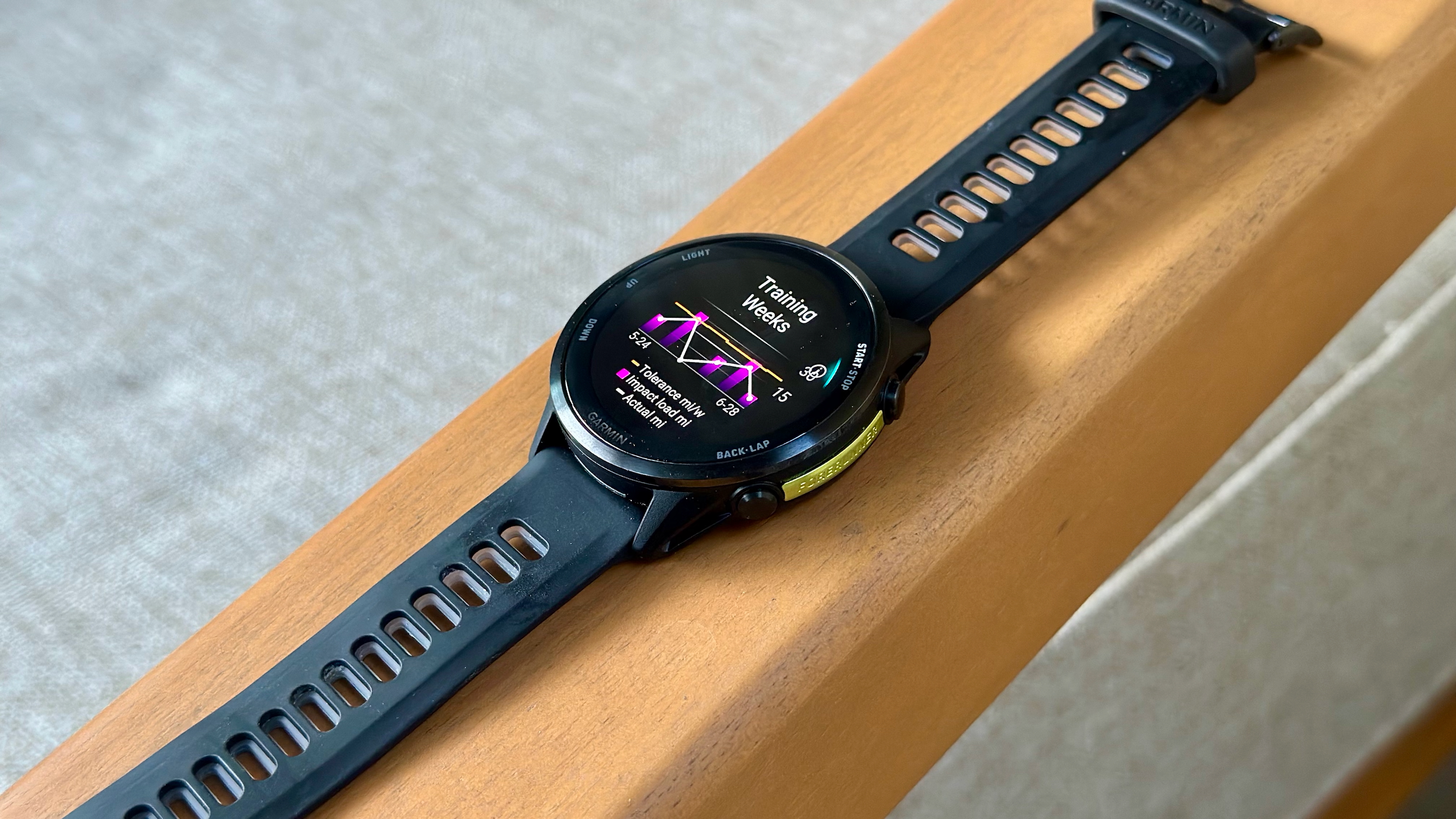
At a glance
1. Best for beginners
2. Best for pros
3. Best mid-range
4. Best true smartwatch
5. Best battery life
6. Best budget
How to choose
As someone who's run thousands of miles over the past few years with dozens of smartwatches, I'm here to help you pick the best running watch available, specific to your budget and needs.
As much as I love the Garmin Forerunner 970, not everyone can or should spend $750 on a running watch. So the "best" running watch is relative to value and features; for some runners, the much-cheaper Forerunner 165 will be "best" because it has all they need: Good battery life, reliable GPS, and an app to keep them accountable.
My top six picks below (and six alternative picks) are all running watches I've reviewed or tested extensively, so you know I'm recommending them based on real-world experience, not marketing.
Whether you're a marathoner or beginner, and whether you care about "smarts" or only need fitness tools, my running watch guide will help you find the right option. As you prepare for your 2026 New Year's resolutions, your new watch will get you on track to run more miles or hit a PR!

Michael Hicks is Android Central's resident smartwatch geek, having reviewed or tested dozens of wearables from Samsung, Google, Apple, Garmin, Fitbit, Coros, Polar, Withings, Amazfit, and others. He spends his free time running or hiking while wearing several watches at once, testing which is most accurate.
At a glance

Best running watch for beginners
This running watch delivers all of the essentials for hundreds less than your typical Garmin. Beginners and running veterans alike can benefit from its training suggestions and accurate data.

Best running watch for pros
Take the Forerunner 165 template, then add extra battery life and all the running bells and whistles Garmin has to offer, and you get the true best running watch of the year — if you can afford it.

Best mid-range running watch
COROS consistently delivers running tools that never feel overpriced. The PACE Pro finally delivered an AMOLED display while keeping its trademark battery life and accuracy.

Best true smartwatch for runners
Many runners reasonably want a smartwatch that's just as useful outside of workouts. Google's Gemini smarts and Play Store apps, combined with Fitbit insights, make for a great balanced package.

Best battery life
Choose between weeks of battery life with a modern AMOLED display or months of battery with solar recharging. Either way, it's built for the trail and ready to guide your training.
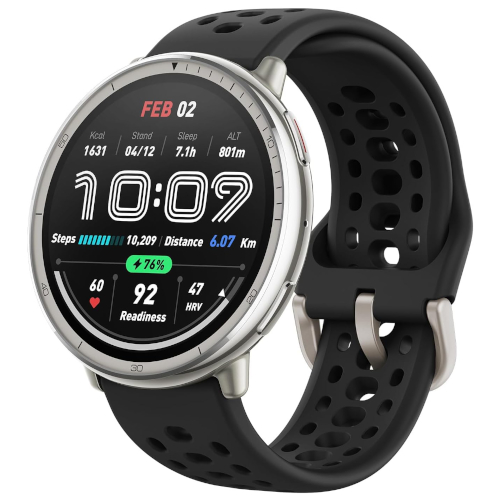
Best budget running watch
Thrifty runners who want to spend the bare minimum will get a shocking amount of value out of the Amazfit Active 2, from its bright display and Bluetooth calling to built-in GPS and workout suggestions.
Best running watch for beginners
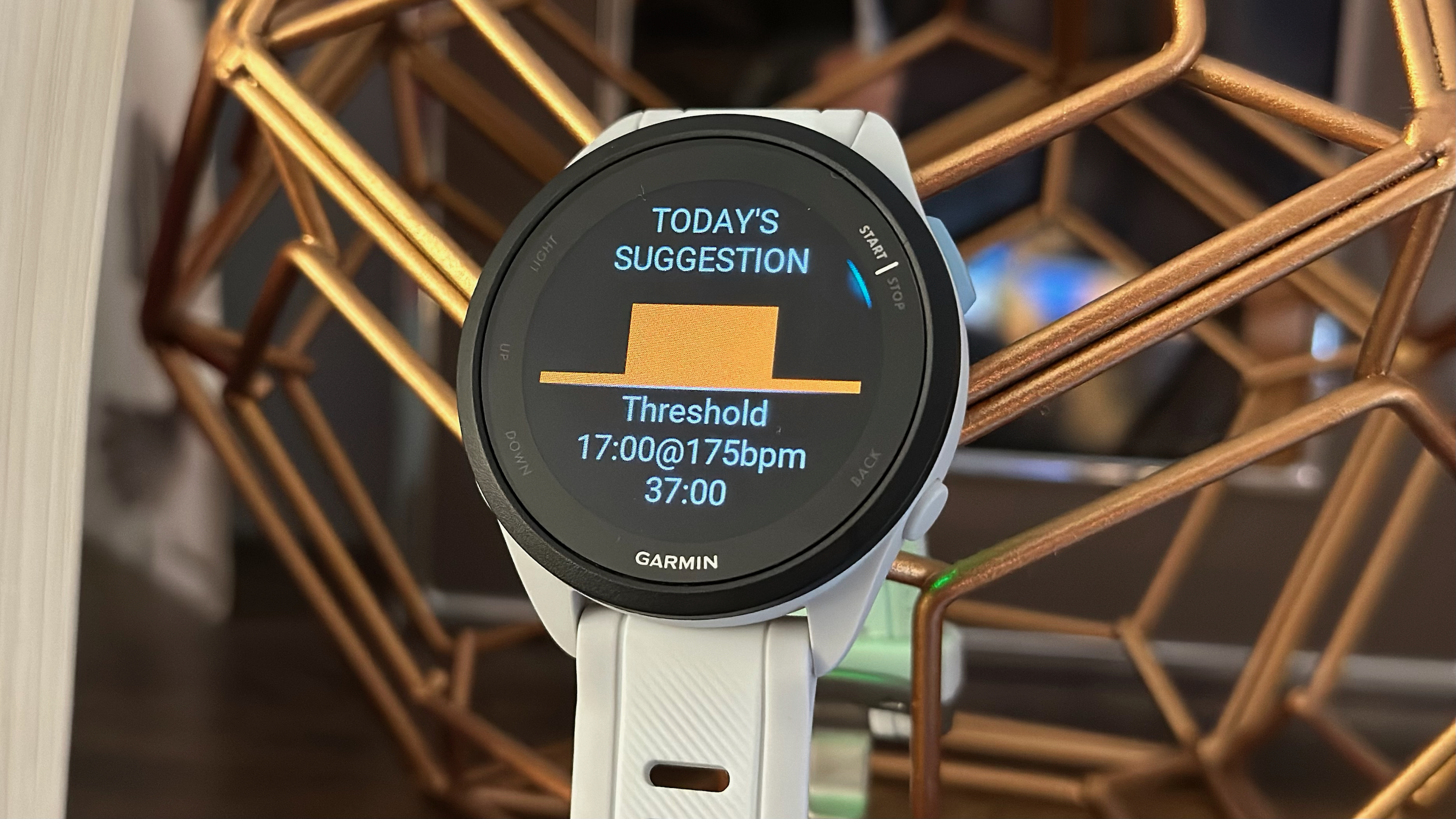
Specifications
Reasons to buy
Reasons to avoid
If a couch-to-5ker, lapsed cross country runner, or cross-training athlete wanted to get more seriously into running, the Garmin Forerunner 165 is the first watch I'd point them to.
It gives you accurate workout data, daily run suggestions, post-run analysis, and recovery time recs, but doesn't overwhelm you with features. All you need to do with the Forerunner 165 is go out and run.
Structured runners can follow a Garmin Run Coach training plan, your calendar filled with weeks of personalized workouts designed to help you run a first 5K, hit a PR, or just improve your VO2 Max. If you prefer flexibility, the Forerunner 165 will suggest a workout every day, targeting different types (sprints, threshold, tempo, base, etc.) and setting the pace based on your fitness level.
The Forerunner 165 beat other cheap running watches for HR and GPS accuracy in my testing, and its battery life will easily withstand anything from a week of daily runs to an ultramarathon.
My old #1 running watch pick, the Forerunner 265, is objectively better. It gives you a lactate threshold, training load focus, training status, and improved dual-band GPS. But do runners need this enough to spend another $200? I think the Forerunner 165 will be enough for you, until you put in the miles to earn a more robust running watch.
Alternate pick: The new COROS PACE 4 has a brighter 1.2-inch AMOLED display, an extra week of battery life, dual-frequency GPS, training load data, and a similarly lightweight design, while costing the same. Aside from the lack of NFC payments or daily suggested workouts, there are very few downsides to the PACE 4 as a Garmin alternative.
Best running watch for pros

Specifications
Reasons to buy
Reasons to avoid
Now let's target dedicated runners who don't flake out on their marathon training and track more than just their pace and mileage. If you want the best possible hardware and software, then seriously consider the Garmin Forerunner 970, the best running watch I've had the privilege to test.
It delivered fantastic GPS, HR, and step count accuracy in my testing, plus all the training tools the 165 has. On top of that, its training load focus graph helps self-guided runners determine whether you're neglecting low-aerobic or anaerobic training as you boost your VO2 Max, while hill and endurance scores quantify how your fitness level translates into real-world running performance.
The most compelling feature, however, is running tolerance. Most Garmin watches only take cardiovascular exertion into account when judging how long you need to recover; only the 970 judges your muscular and biomechanical load, warning you if you're overtraining and calculating how harder runs have a disproportionate impact load on your body.
Rather than splurge on a Fenix 8, grab a Forerunner 970 that's much lighter, easier to read outdoors, and will help you avoid injury while taking your training to the next level.
Alternate pick: Before the 970, the Forerunner 965 was my favorite to recommend to serious runners, and it's still tempting with its 23-day battery life. If you can do without running tolerance, a flashlight, 5th-gen HR sensors, and Bluetooth calling, maybe grab the 965 when it's on sale instead.
Best mid-range running watch
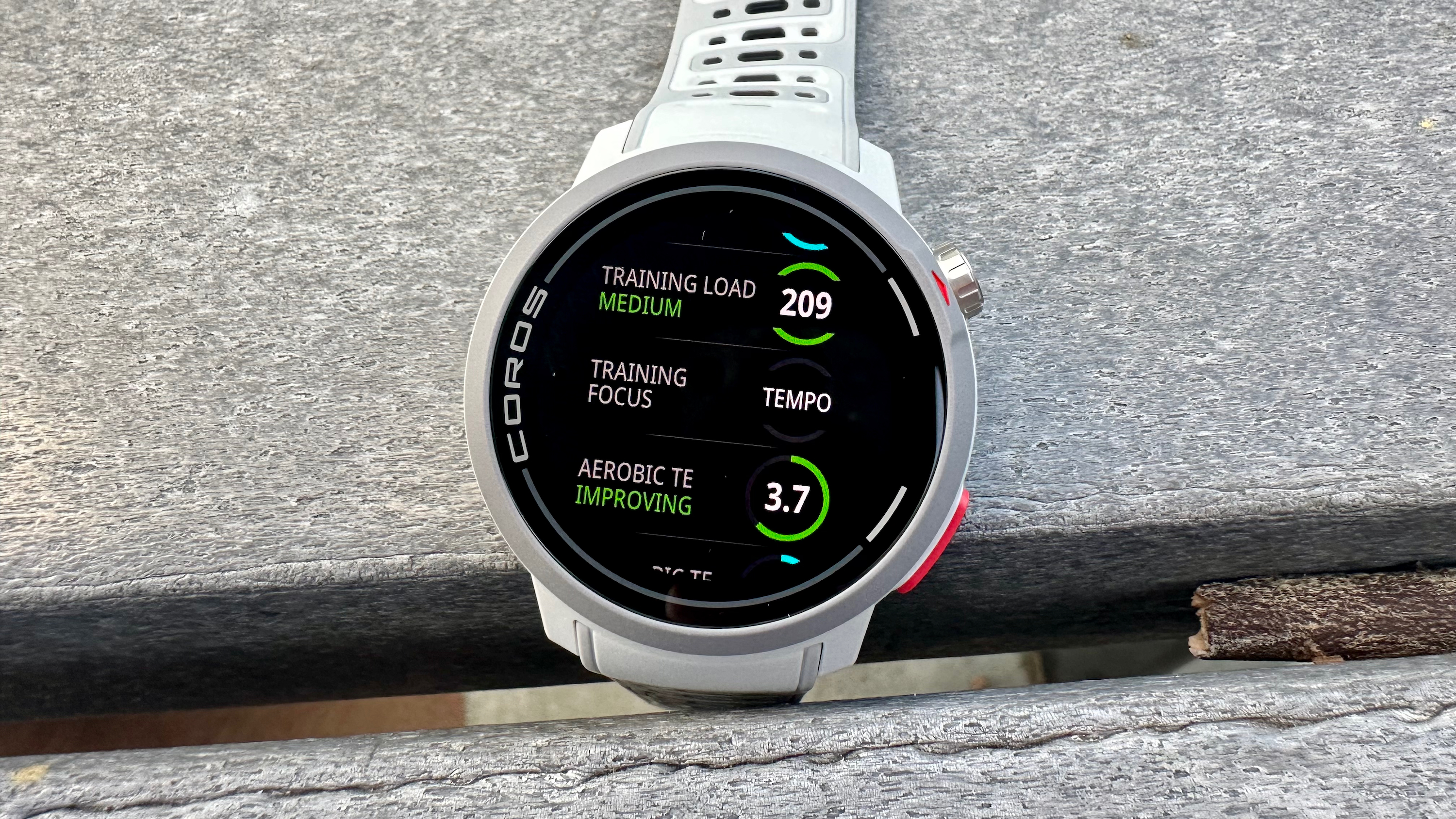
Specifications
Reasons to buy
Reasons to avoid
As much as the Garmin Forerunner series earns its reputation, it keeps getting pricier (the Forerunner 165 aside). Don't limit your running search to them when mid-range running watches like the COROS PACE Pro undercut them with similar perks.
COROS typically sells MIP watches to prioritize battery life, but it finally gave in to industry trends and gave the PACE Pro a 1,500-nit AMOLED, without ditching its trademark weeks of battery life. It's lightweight for long runs, and some runners will prefer its rotating dial to Garmin's up/down buttons.
Using maps on the PACE Pro is so much more seamless; it's easy to scroll in and out, both because of the crown and because the PACE Pro has a newer processor powerful enough for maps to run smoothly. And you can count on fantastic dual-band GPS accuracy, its results typically staying in lockstep with my Forerunner 970. The HR results don't quite keep up with a chest strap, but it's always reliably within range.
Otherwise, you're getting the training essentials like training load and status, time in HR zones, recovery time, race predictions, and Strava Live Segments. COROS doesn't have every tool that Garmin offers, but it doesn't price-lock features like Garmin does, so any new features over the next couple of years will come to the PACE Pro, along with its more expensive APEX and VERTIX watches.
Alternate pick: Other mid-range running watches like the Garmin Forerunner 265 ($449), Polar Vantage M3 ($449), and Suunto Race 2 have comparable tools but cost notably more. You may prefer the APEX 4 ($429), which has significantly longer GPS battery life and a mic & speaker for Bluetooth calling, though you'll have to accept an MIP display instead of AMOLED.
Best true smartwatch for runners
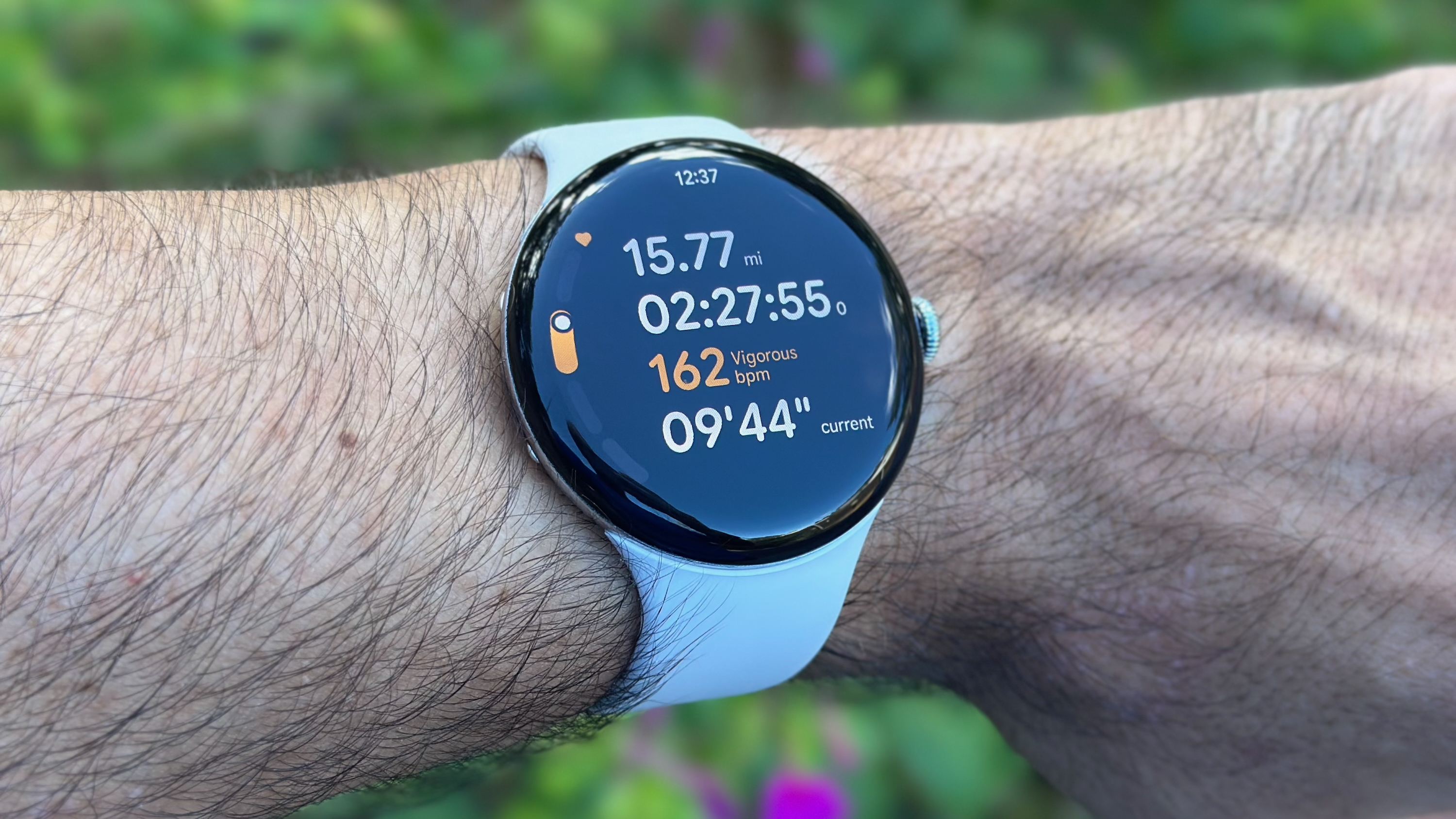
Specifications
Reasons to buy
Reasons to avoid
Most of my suggestions are great for running, but mediocre at best for "smarts." A true smartwatch is more useful outside of runs, with AI assistants, more health insights, and full app libraries — including some third-party fitness apps like Nike Run Club or Strava.
My first recommendation of a smartwatch for runners is the Pixel Watch 4. You get dual-frequency GPS, a 3,000-nit display, and (with the LTE model) music streaming over cellular, plus satellite connectivity for emergencies. In my Pixel Watch 4 fitness test, it performed very well for GPS accuracy against the Forerunner 970, while its HR data is at least consistent, if not perfect.
Battery life is always a concern with a true smartwatch. Thankfully, my Pixel Watch 4 battery test proved that the 45mm model only uses about 10% battery per hour of GPS tracking, making it more than capable of tracking a marathon. Plus, it has blazingly fast charging; by the time you finish a post-run shower, you'll have regained your lost battery.
Google first started catering to runners with the Pixel Watch 3, adding AI-backed run coaching tools for Premium subscribers. Fitbit's training load equivalent, cardio load, calculates how hard your heart works both inside and outside of workouts — especially useful for cross-training. Now, Google has launched a Fitbit Personal Health Coach that lets you build an AI-generated workout plan for anything from 5Ks to marathons; I'm still testing it out, but it's quite intriguing.
The Pixel Watch 4 still has some limitations for runners: Its data during workouts is limited to a few stats, there's no option to download and follow GPX courses, and you can't sync a HR chest strap for better data. But it's a respectable, balanced option for runners, or athletes looking to incorporate running into other training.
Alternate pick: The Apple Watch Ultra 3 is the obvious choice for iPhone owners, with its 5G and satellite connectivity, 14 hours of dual-frequency GPS workout tracking, Workout Buddy guidance, and custom workouts for interval training.
Best running watch for battery life
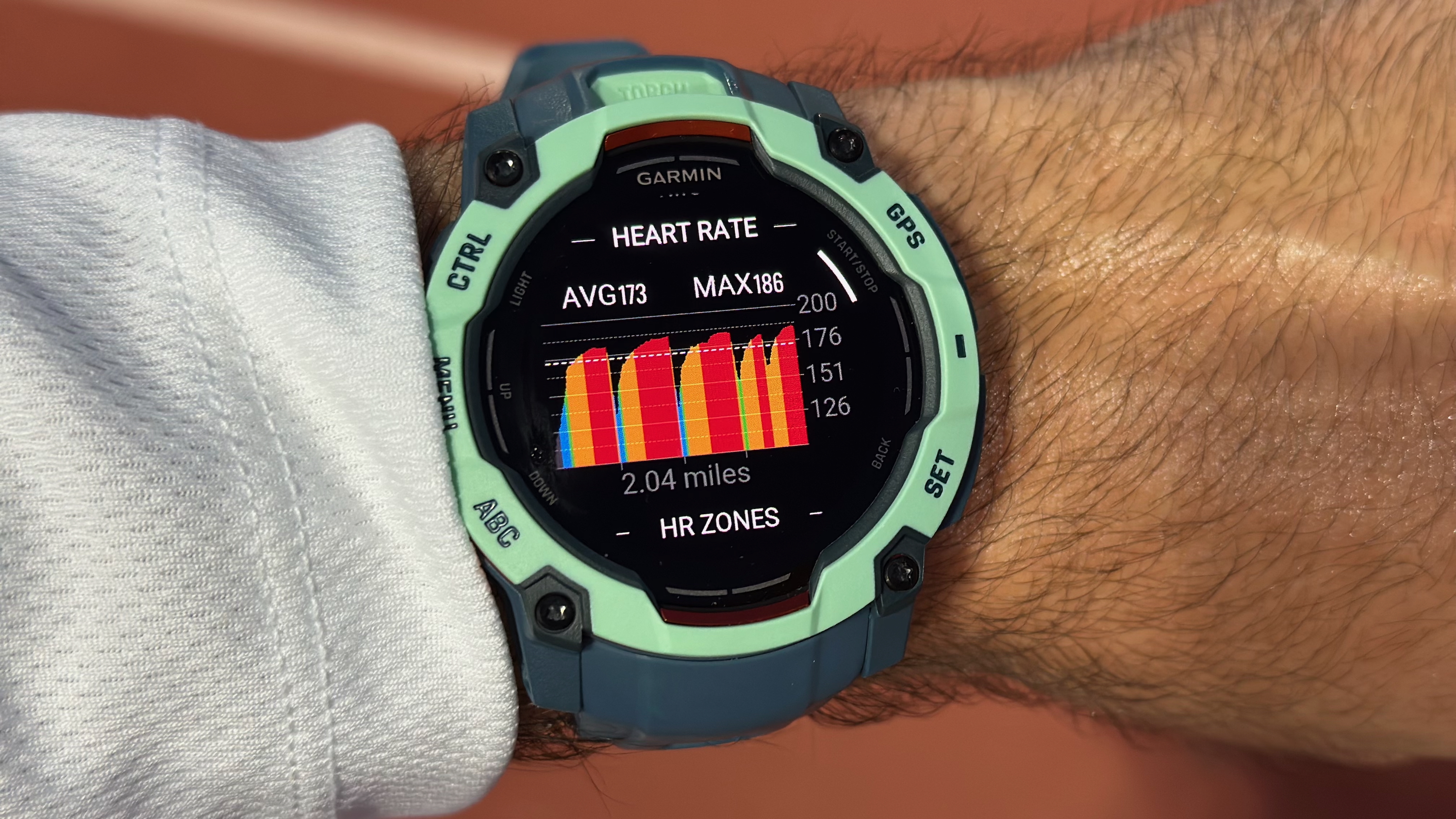
Specifications
Reasons to buy
Reasons to avoid
The Garmin Instinct 3 isn't the longest-lasting running watch out there — especially the AMOLED model I'm recommending — but I'm once again trying to balance cost and value. My colleague Brady loves his Garmin Enduro 3, which lasts 36 days normally, three months with daily solar recharges, or 320 hours of solar-backed GPS tracking. But I can't fill this list with watches that cost as much as flagship phones.
At $500, the Instinct 3 AMOLED lasts 24 days or 40 GPS hours, more than enough battery life for the vast majority of runners to be happy. Or, if you're willing to trade away visibility for endurance, the Instinct 3 MIP Solar costs slightly less and has "unlimited" capacity if you spend your days outdoors or 40 days indoors.
Most importantly for this discussion, the Instinct 3 lineup has the same running essentials as a mid-tier Forerunner: daily suggested workouts that adjust to your training status or upcoming race, training load focus, and grade-adjusted pace. It's much lighter than it looks, and while it won't win any beauty pageants, it'll appeal to rugged watch fans and withstand any damage from the trail.
Alternate pick: The COROS VERTIX 2S lasts a whopping 46 days per charge and did respectably well in my accuracy testing against Garmin and Polar flagships. It's on the expensive side at $699, however, and it's more suited for true mountain climbers or extreme trail runners than your typical urban runner (like me).
Best cheap running watch
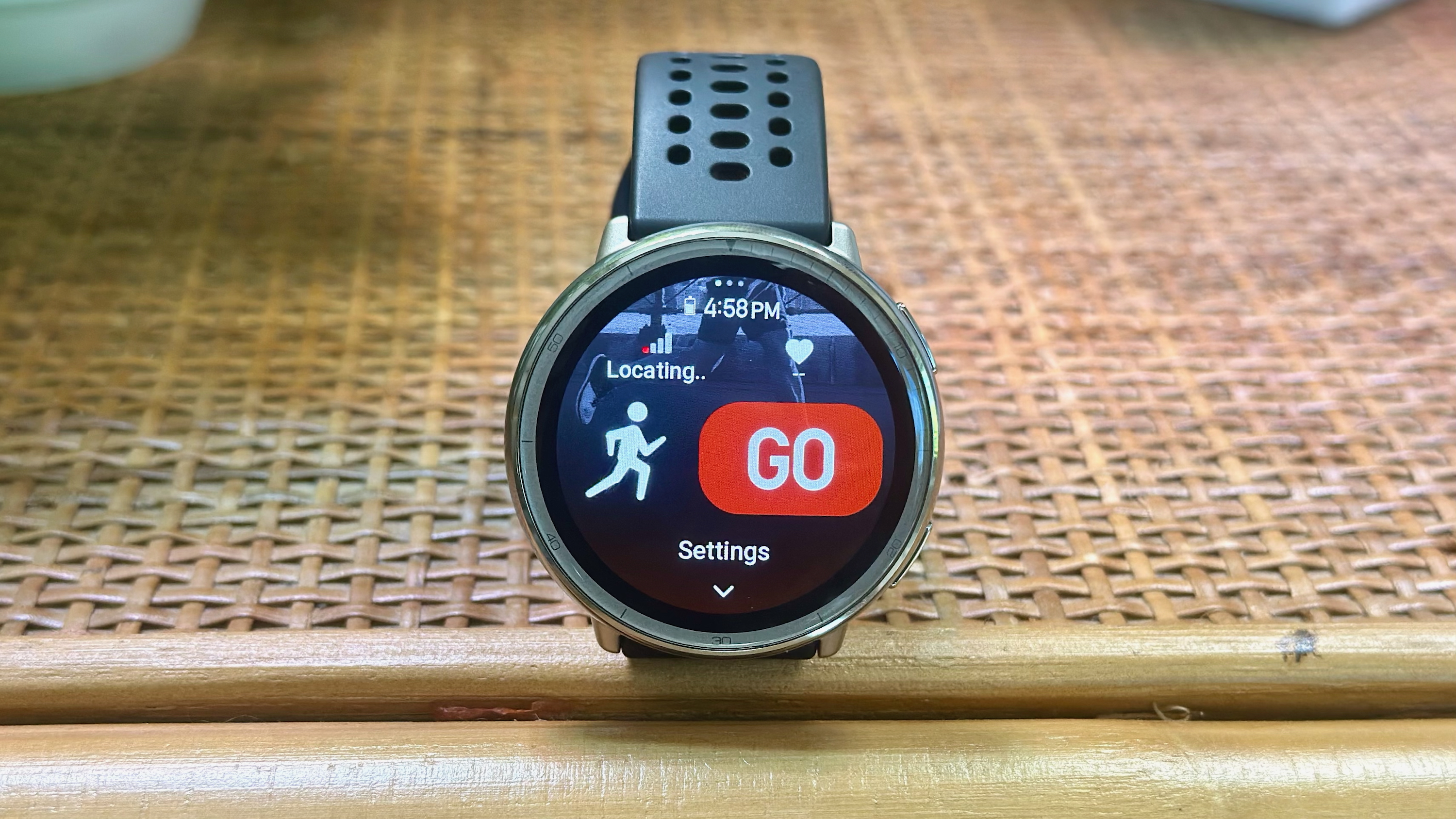
6. Amazfit Active 2
Our expert review:
Specifications
Reasons to buy
Reasons to avoid
Now we're in the territory for people who think even the $250 Forerunner 165 is "too expensive." Amazfit is a collective Android Central favorite when it comes to budget watches, but its dedicated running watch, the Amazfit Cheetah Pro, has much more rigorous competition at $300. Instead, you could consider the Amazfit Active 2, a sub-$100 smartwatch with all the essentials.
This is my only "best running watch" pick that I've yet to review, so I can't give a fully confident recommendation yet. But I've taken it out for enough runs to know that I'm not getting duped. Despite being this cheap, the Amazfit Active 2 gives you built-in GPS, a bright display (with sapphire glass on the "premium" model), elevation tracking, personalized Zepp Coach training plans for specific race lengths, and super-basic maps.
Basically, this is the watch to look at if you're considering something cheap like the Fitbit Charge 6 but want a full-sized display and no mandatory subscription — something "good enough." It'll last at least five days with active use, and it'll tell you whether you're working out enough to improve. It also has a ridiculous number of sports modes if you're someone who likes to cross-train.
Alternate pick: The Fitbit Charge 6 doesn't qualify as a "watch" but it does give you adequate built-in GPS and excellent HR accuracy. Otherwise, try looking at other Amazfit watches like the uber-cheap Bip 6 (also with built-in GPS).
How to choose the best running watch for you
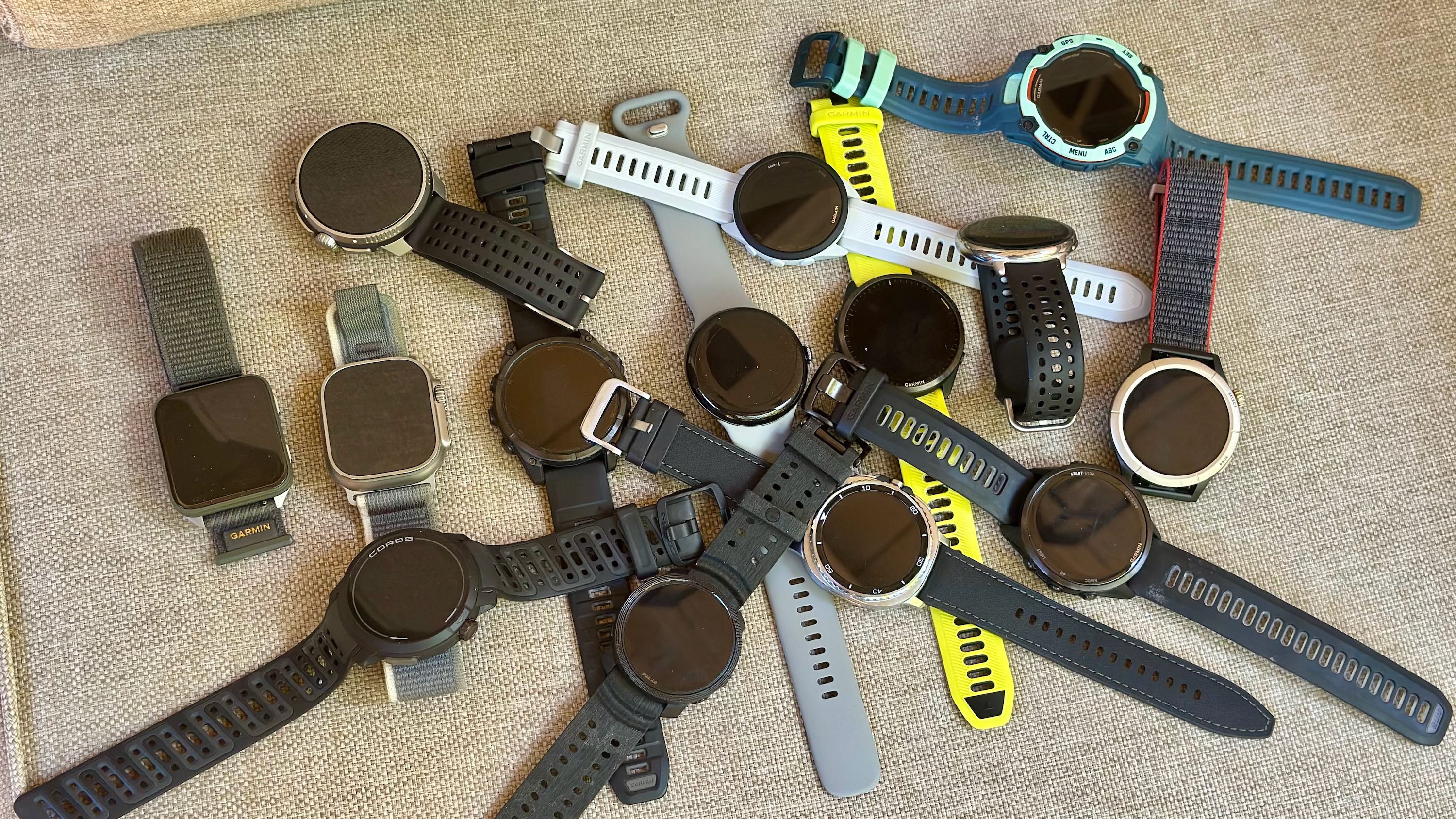
Hopefully, my best running watch selections have successfully targeted most types of runners. But if you're still feeling uncertain on which to choose, follow my step-by-step running watch buying guide below!
1. Choose your running watch budget
Why you can trust Android Central
Some smartwatch and fitness watch brands offer the same software across price ranges, only making you pay extra for better hardware. Others (most notably Garmin) price-lock software to the most expensive models.
Either way, you have to decide how much you're willing to spend. So I've broken down fitness watches and smartwatches into price tiers, so you can see the most popular options in your range.
Price range | Running / fitness watches to consider | Smartwatches to consider |
|---|---|---|
Under $250 | Garmin Forerunner 165 ($249) COROS PACE 3 ($199) Amazfit Active 2 ($99) CMF Watch 3 Pro ($99) Suunto Run ($249) Fitbit Versa 4 / Sense 2 ($199–249) COROS PACE 4 ($249) | Samsung Galaxy Watch 7 (typically discounted under $199) Apple Watch SE 3 ($249) OnePlus Watch 2R ($229) |
$250–399 | COROS PACE Pro ($299) Suunto Race / Race S ($349–399) Garmin Forerunner 255 ($349) Amazfit Cheetah Pro ($299) Amazfit Balance 2 ($299) Polar Pacer Pro ($349) COROS NOMAD ($349) | Samsung Galaxy Watch 8 ($349) Google Pixel Watch 4 ($349) OnePlus Watch 3 43mm ($349) Apple Watch Series 11 ($399) |
$400–499 | Garmin Forerunner 265 ($449) Suunto Race 2 ($499) Garmin Instinct 3 ($449–499) Garmin Forerunner 955 ($499) COROS APEX 4 ($429–479) Garmin Venu 3 ($449) Polar Vantage M3 ($499) | Samsung Galaxy Watch 8 Classic ($499) |
$500–699 | Garmin Forerunner 965 ($599) Garmin Forerunner 570 ($549) Garmin Venu 4 ($549) COROS VERTIX 2S ($699) Suunto Race 2 Titanium ($599) Suunto Vertical 2 ($599) Polar Vantage V3 ($699) COROS VERTIX 2S ($699) | Samsung Galaxy Watch Ultra ($649) |
$700–$1,000 | Garmin Forerunner 970 ($749) Garmin Venu X1 ($799) Garmin Enduro 3 ($899) Garmin Fenix 8 ($1,000+) Polar Grit X2 Pro ($999) | Apple Watch Ultra 3 ($799) |
2. Weight and design matter as much as features

Most dedicated running watches don't look that attractive. They give you extra buttons or crowns to avoid sweaty touchscreen controls, plus lightweight polymer materials instead of metal. It leaves them looking thick, sporty, and corny to non-runners.
True smartwatches, on the other hand, have heavy-but-powerful processors, extra sensors, and chunky batteries; companies leave band weight off of the spec sheet to trick you into thinking they're lighter than they are. But you may accept these trade-offs because they'll look more "normal" in professional contexts.
I find 57 grams or 2 ounces to be my cutoff point. Anything beyond that, and you're sacrificing comfort for better materials, power, or battery life. But you also may not want to go too light: As much as I love my Garmin Venu X1 for its 40g weight, I lean toward the 56g Forerunner 970 for its hours of extra GPS tracking.
3. What are the most important tools a running watch needs?
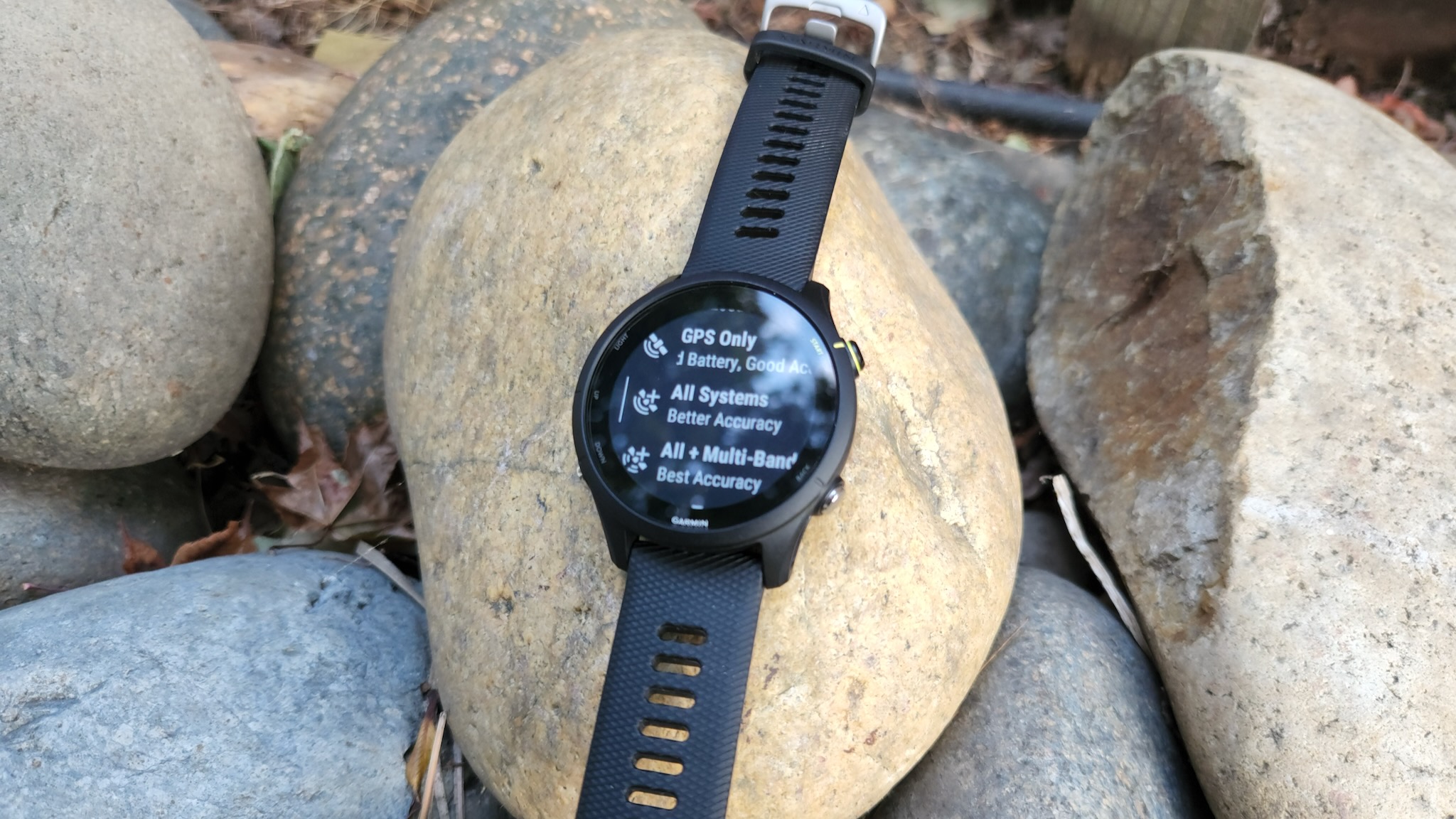
Many smartwatches don't offer a convenient way to connect with external HR monitors, gym equipment, cycling accessories, and so on. Make sure your chosen brand will work with your BLE or ANT+ tech before you buy a running watch.
Beyond that, consider that many cheap running watches don't have sensors or tools that you may find essential. So let's run through what you should look out for:
GPS: Built-in GPS is an obvious necessity, so you're not dependent on your phone GPS. But standard L1 GPS alone isn't that reliable in urban canyons, dense foliage, or mountain regions. Most watches offer multiple GNSS like GLONASS or Galileo, but they only use one at a time depending on where you live.
Dual-band GPS uses L1 and L5 frequencies to pinpoint your location and avoid signal errors, and it's the most accurate option available — though also the most battery-intensive. As a middle ground, look for watches that offer "all-systems GNSS," pinpointing with multiple satellite systems.

Health sensors: Any running watch will offer heart rate and sleep tracking. But if you care about recovery and energy estimates, you need one that judges stress levels or HRV. Skin temperature data is often useful to show warning signs about your body's health and sleeping conditions.
For heart health, ECG readings help you catch signs of arrhythmia, but you must choose to take those readings yourself. A few smartwatch brands and Fitbits have passive heart rate rhythm warnings; in particular, Google has Loss of Pulse emergency detection, while Samsung has Vascular Load data.
Blood oxygen is also a useful metric; I appreciate how Garmin lets you decide whether to measure SpO2 at night or all day, if you're trying to determine how well you're acclimating to higher elevations.
Fitness sensors: A running watch needs an accelerometer to judge your running power and form, but all other sensors are optional. If you want the best experience, make sure your chosen watch has an altimeter to judge elevation data, a gyroscope for more accurate wrist movement detection, and a compass to enable course navigation.
4. Which apps do you need?

Garmin is the "smartest" fitness watch brand. It offers contactless payments, music apps like Spotify or YouTube Music, Google Maps turn-by-turn navigation, Strava Live Segments, partnerships with brands like Komoot, and so on. But even this is fairly limited compared to what you'd get on an Apple, Galaxy, or Pixel Watch.
They let you directly use watch apps like Strava, Nike Run Club, MyFitnessPal, Strong, MapMyRun, and so on. They have the power to handle true smart assistants like Gemini or Siri, while brands like Garmin and Amazfit have much more limited assistants that tend to misunderstand your commands.
Only you can decide if you need these smarts more than you need extra battery life. Garmin is the best middle-ground option, but it's still a compromise.
5. How much battery life do you REALLY need?
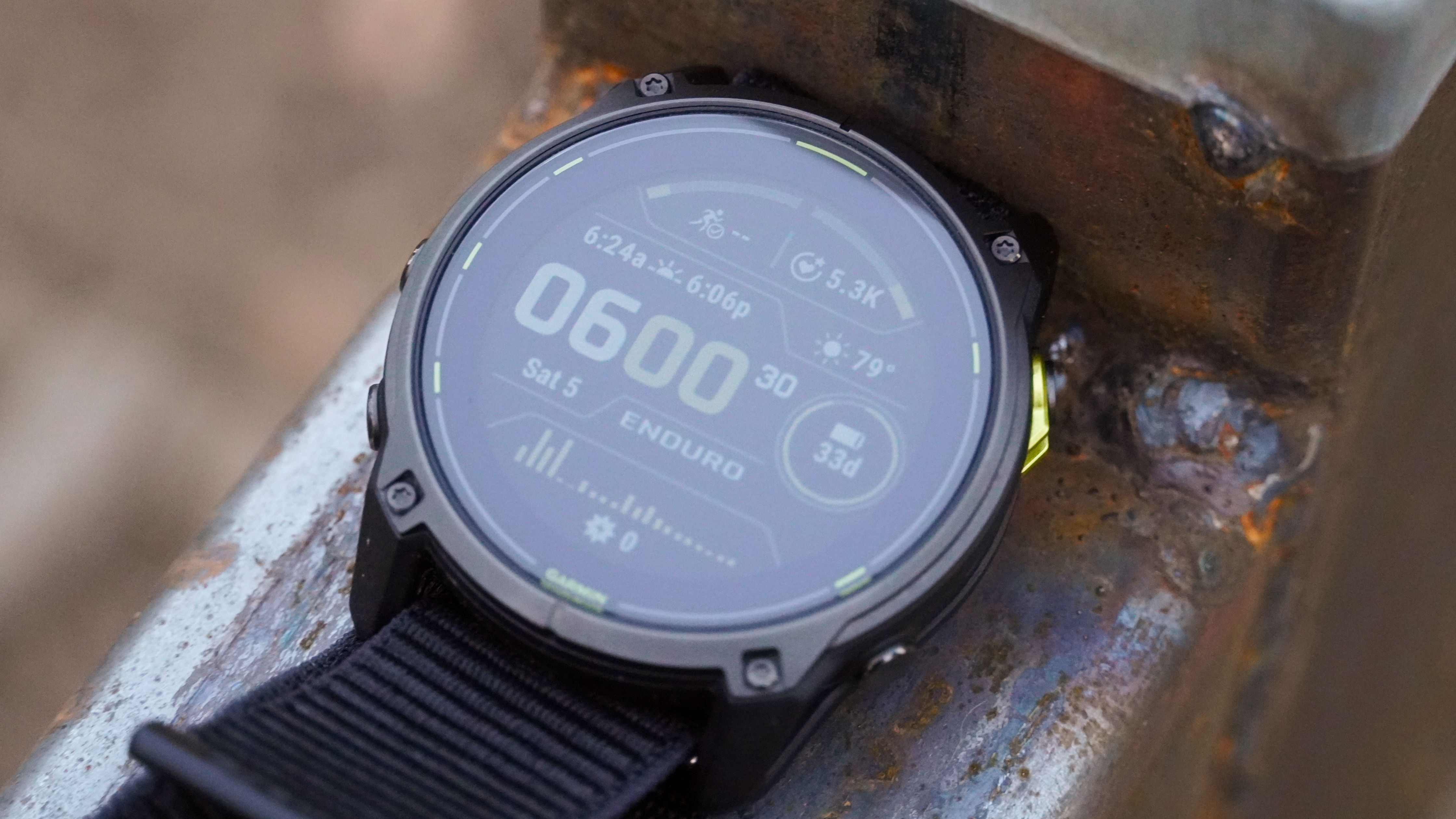
My dad used to run 100 milers, and so he'd have needed a watch like the Enduro 3 that could last for over 24 hours of continuous GPS. For almost everyone else, a 5- or 6-hour marathon is probably the longest they'll ever run, and so extra battery life isn't as much a necessity as a wonderful perk.
Most of my fitness watch picks last at least one week, trending toward two weeks; the models that last longer aren't "running watches," per se, but adventurer's watches meant for long backpacking excursions. They tend to be more rugged and bulky, as well as more expensive, and they may use an MIP display in place of AMOLED.
I think the Forerunner 165's 11-day battery or 17-hour GNSS tracking is an excellent sweet spot for most runners, who can top off their watch every week or so while they're taking a post-workout shower. Everything else is gravy.
Get the latest news from Android Central, your trusted companion in the world of Android

Michael is Android Central's resident expert on wearables and fitness. Before joining Android Central, he freelanced for years at Techradar, Wareable, Windows Central, and Digital Trends. Channeling his love of running, he established himself as an expert on fitness watches, testing and reviewing models from Garmin, Fitbit, Samsung, Apple, COROS, Polar, Amazfit, Suunto, and more.
- Courtney Lynch
- Namerah Saud FatmiSenior Editor — Accessories
